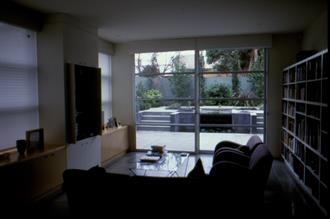What is a Healthy Building?
A building should provide a pleasant, efficient and healthy environment for its occupants. Its primary purpose should be to protect from adverse conditions found outside; but in doing so, not loose the beneficial conditions found outside. If a building is properly planned and built well, these aims can be achieved. In most situations, buildings should satisfy the following:
- Buffer the impact of adverse external conditions (e.g. extremes of temperature, wind, moisture).
- Make use of natural light during the day (with windows, skylights, reflective interior surfaces, etc).
- Provide appropriate artificial light (without glare, with appropriate intensity and wavelengths, etc).
- Maintain good air quality inside (e.g. through ventilation, indoor plants).
- Minimise pollutants/toxins (e.g. fumes, dust).
- Control acoustics (stop unwanted noise; avoid interference/distortion of desirable noise, etc)
- Provide unimpeded movement and access to all areas.
- Provide rapid response to environmental controls (e.g. ability to raise or lower temperature quickly, ventilate rapidly if necessary).
Learn building biology

"Building Biology deals with the study of living organisms in and around the building environment which have direct or indirect effect on the health of the building fabric, its materials, structures, environments and occupants." Jagjit Singh (1993)
Building biology, bio-house design, biological architecture and ecological building all refer to the construction of a building along lines of more natural, renewable resources and health of the occupants. In other words buildings become more people-friendly. It aims to establish a balance between technology, culture and biology.
__________________________________
Some thoughts on Environmental Health from our Tutors
To a human-being, the walls of a building can be regarded as a third skin (the first is our own skin, the second is our clothing). Most buildings do not breathe like our natural skin and unfortunately in the United States this has been shown to lead to a build-up in radioactive radon gas and reduce the benefits of passive solar energy in spring and autumn. If a building is to be sealed (which most are) then it needs to be well ventilated to remove unhealthy pollutants.
Many buildings contain hazardous materials or substances without the owner's knowledge. Freshly constructed cement homes have high levels of moisture, homes built in the 1960's contain asbestos cement which is known to be carcinogenic and old piping systems are frequently painted with lead paints. In addition, household disinfectant, fly sprays, paints, varnishes, and fumes released from a large range of furnishings and commodities are of no benefit to the occupant's health.
Environmental costs are considered from the very first stage of planning. If products need to be transported a long distance, then they are usually rejected due to pollution, energy and costs for transportation. Even non-renewable resources are avoided.
Building Diseases can be related to many factors including:
- Chemical - fumes.
- Electrical - the human body is sensitive to electrical frequencies. Wiring should be minimal, not placed closer than 1 metre to the sleeping bed, and the use of TV and other appliances should be reduced. Even static electricity from synthetic floor coverings can cause problems.
- Cage - this occurs when concrete and steel buildings screen out natural radiations which help regulate life systems.
- Location - this covers geo-biology which is concerned with natural
radiation that originates within the earth. It is a new science based on
traditional principles
Building biology also deals with the environment in general and the climate of living. The climate of living can be determined by things such as:
- Installations and furnishings
- Noise and acoustics
- Lighting and colours
- Radiation, avoiding disturbed areas
- Radioactivity
- Space, form and proportion
- Physiology and psychology of living and working
- City planning with biological, ecological, and sociological aspects.
 Chemicals in Buildings
Chemicals in Buildings
Chemicals are used in most buildings in a variety of different ways, for example:
- As a construction material (e.g. bitumen roofing, insulation materials, etc)
- As a lubricant (e.g. grease or oil to make door hinges move easily)
- As a sealant or coating material (e.g. paints or varnishes)
- As an adhesive (e.g. glues which fix other materials together)
- As a cleaner
- As a pesticide (e.g. to control termites on foundations, to bait vermin, etc)
- As a fungicide (e.g. to control dry rot).
In many cases, the chemical is meant to do a job, and then disappear. However, this is not always the case. Residues of chemicals are usually left behind and some chemical residues may accumulate with repeated use of the same chemical. Globally there is an astounding 80,000 in commercial use (University of NSW). It is important to be aware of the large amount of different chemicals that enter properties from many different sources and understand that while there is knowledge regarding their impact for some, for many it is incomplete. Even for those we know are dangerous often they are still legally viable.
Although no single chemical may occur in illegal quantities, the cumulative affect of many different types of chemicals can increase a person's sensitivity and eventually lead to problems.
Chemicals may enter a property from many different sources.
COURSE CONTENT
This course takes around 100 hours to complete and has ten lessons covering:
- Introduction To Building Biology
- Building Materials
- Construction
- Services
- Temperature: Heating & Cooling
- The Internal Environment: Ventilation
- Light
- Acoustics
- Ergonomic Considerations
- Psychological Considerations
What You Can Gain From Studying This Course?
This course is aimed at people who are interested in the impact of buildings on the health of their occupants, whether from a personal perspective e.g. an allergy sufferer. or a professional one e.g. builders or architects who would like to make better decisions about construction materials and design. Use what you learn here to:
- Make better decisions concerning fixtures and furnishings in homes
- Help you decide how to replace unhealthy materials
- Examine existing buildings with an eye for health risks
- Add to existing building design and health knowledge
- Forge a foundation towards further study
The course can be studied independently or as part of a higher level qualification.